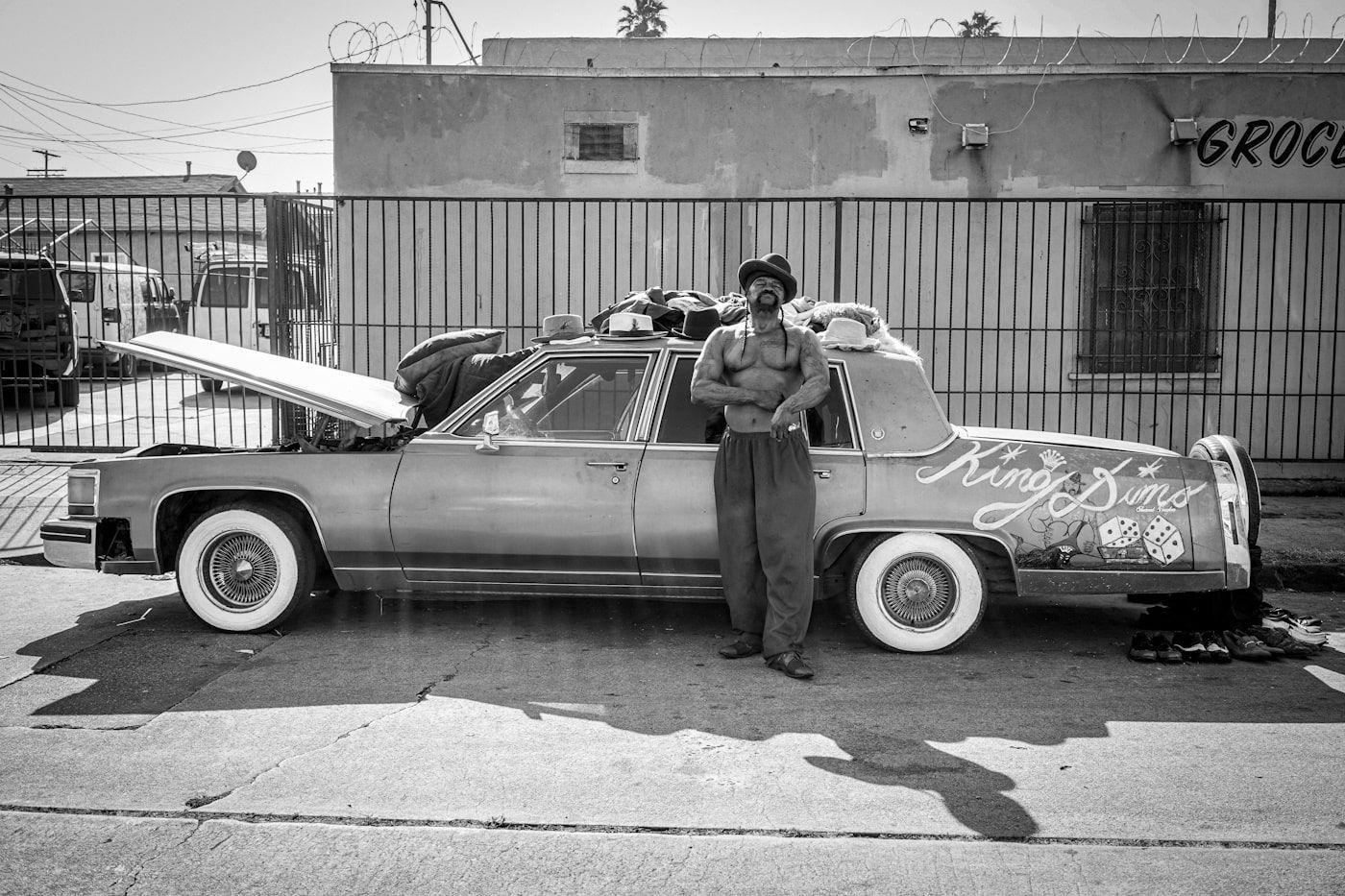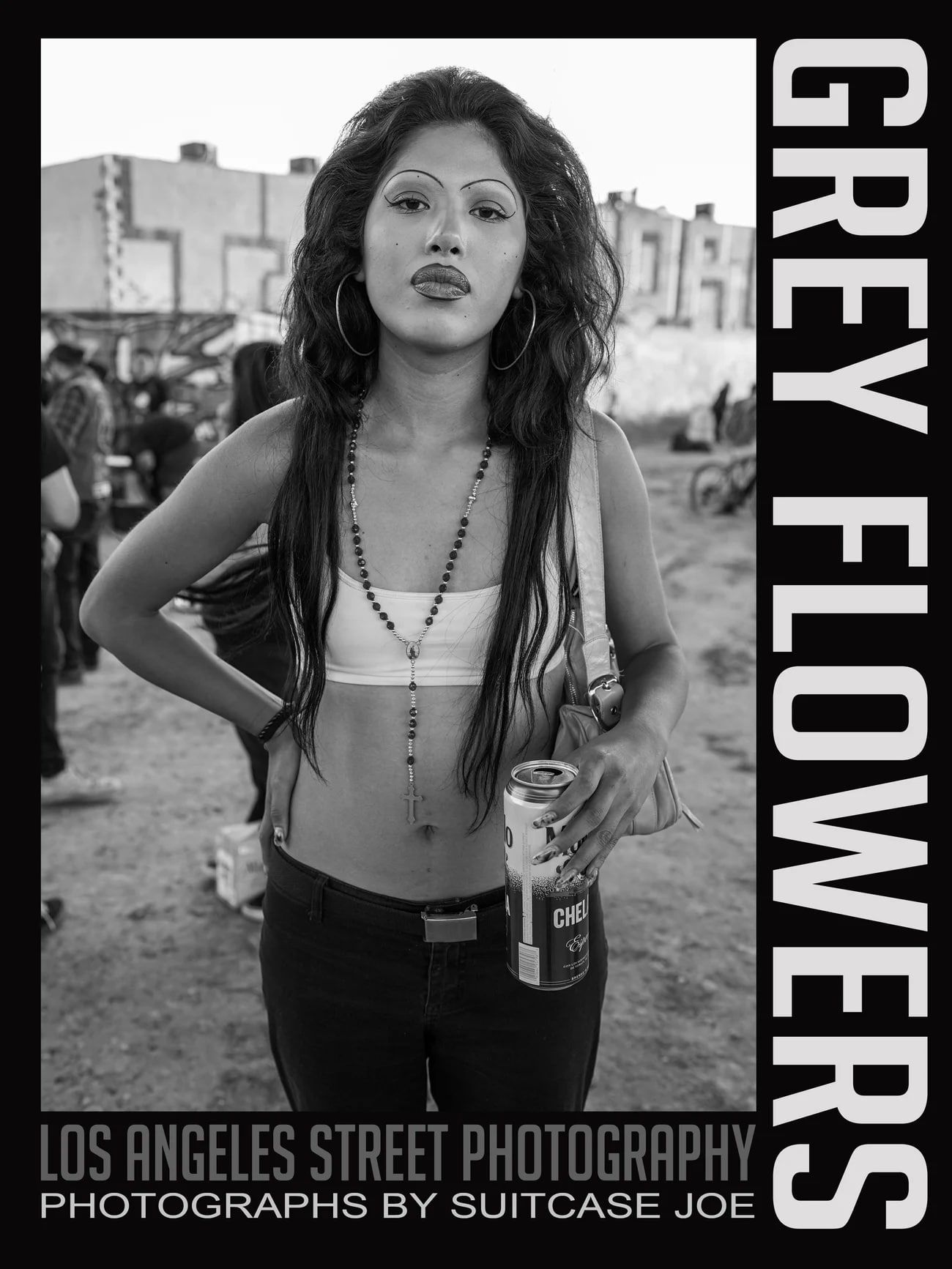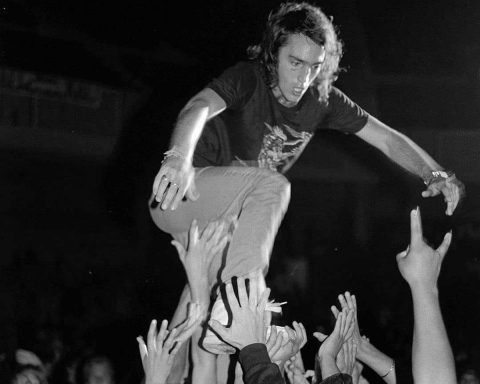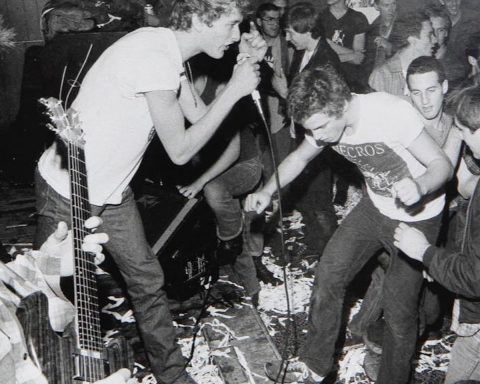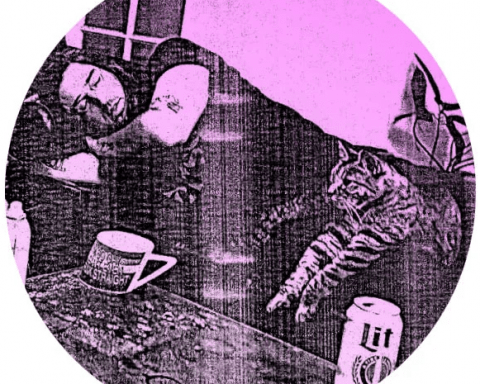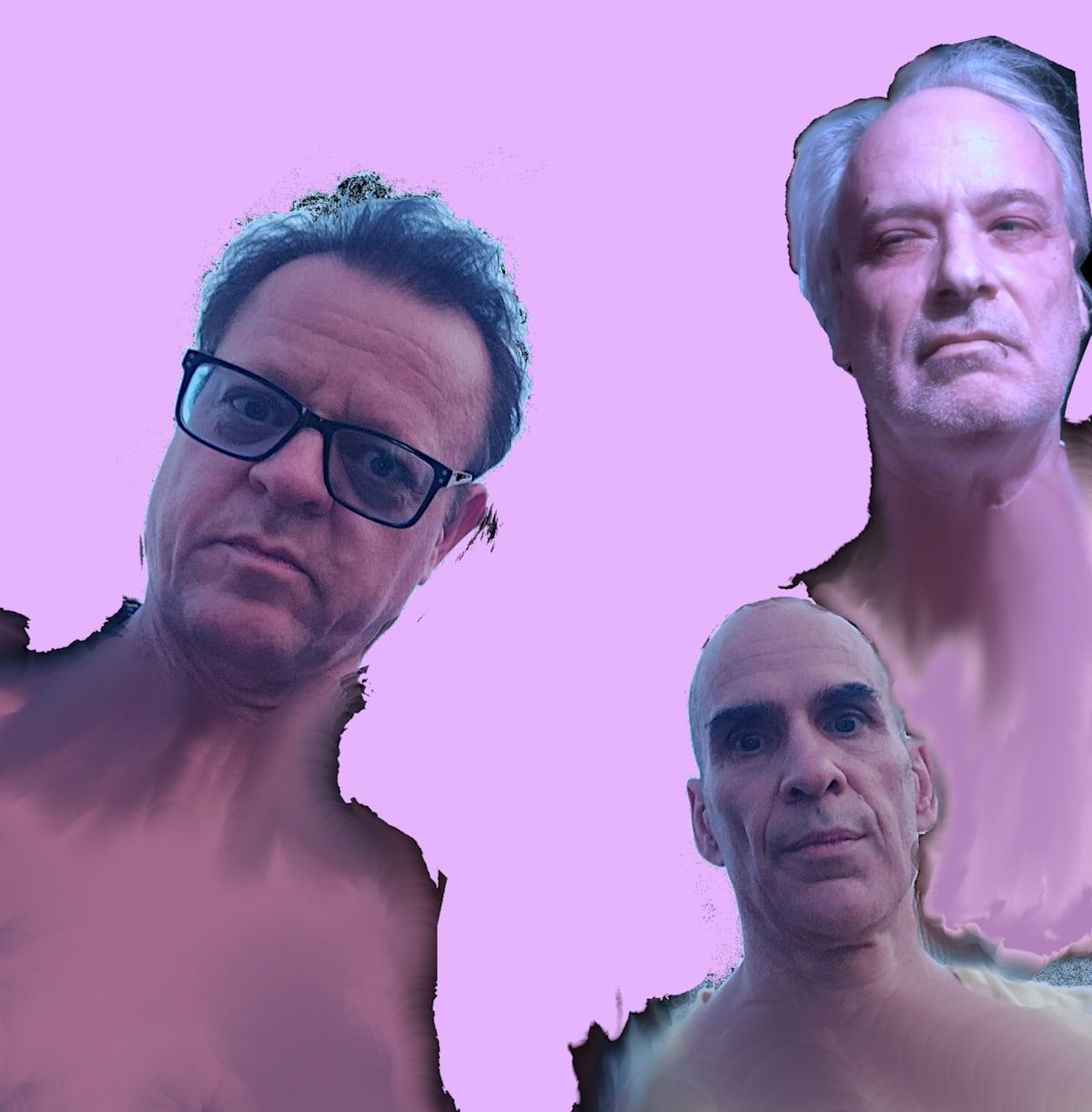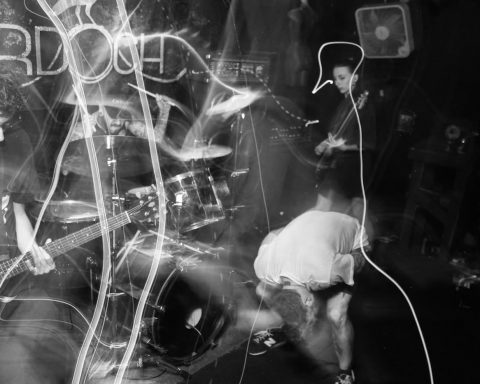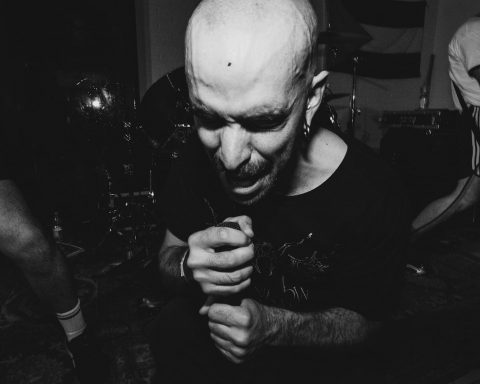Amidst the city’s clamor and the hum of its ever-turning wheels, Suitcase Joe, an enigmatic figure akin to the art world’s elusive Banksy, prowls the streets of Los Angeles. His camera is his confidant, his silent witness to the city’s unfiltered chronicles. In our latest conversation with the anonymous street savant, we peel back the curtain on his sophomore book, “Grey Flowers,” a collection that dares to confront the city’s raw underbelly beyond the confines of Skid Row.
Our exchange ventured through the alleys of Joe’s creative process, exploring the magnetic pull towards L.A.’s fringe dwellers—the punks, the houseless, and the so-called ‘beautiful strangers.’ Joe’s lens seeks out the genuine, the authentic; those whose faces are etched with the storylines of the city’s lesser-seen narratives.
His is a quest for truth amongst the facades, and in “Grey Flowers,” Joe transitions from observer to confidant, earning the trust of his subjects with the currency of empathy and respect.
The conversation delved into the technicalities of Joe’s craft, the delicate balance of capturing a moment without staging it, the dance of immersing himself in scenes while maintaining the detachment necessary to document them. He shared the transformative power of punk culture in shaping his ethos, a DIY mentality that permeates his work, right down to the grassroots production of his music video trailer.
Suitcase Joe’s work, while it adorns gallery walls and claims ink in high-profile publications, is rooted in activism. His photographs are more than mere images; they are statements, calls to action, and he discussed how the Suitcase Joe Foundation extends the reach of his lens into tangible aid for L.A.’s unhoused population.
As we delved into his future endeavors, Joe hinted at ongoing projects that push the envelope of his documentary style and a new book already in the works. His hope for “Grey Flowers“? That it may serve as a catalyst for change, a spark that ignites compassion, and a reminder of our shared humanity in a world too often divided.
In Suitcase Joe’s world, every snapshot is a conversation, every face a universe of stories.
“Grey Flowers” isn’t just a book; it’s an invitation to witness the city through the eyes of those who call its shadows home.
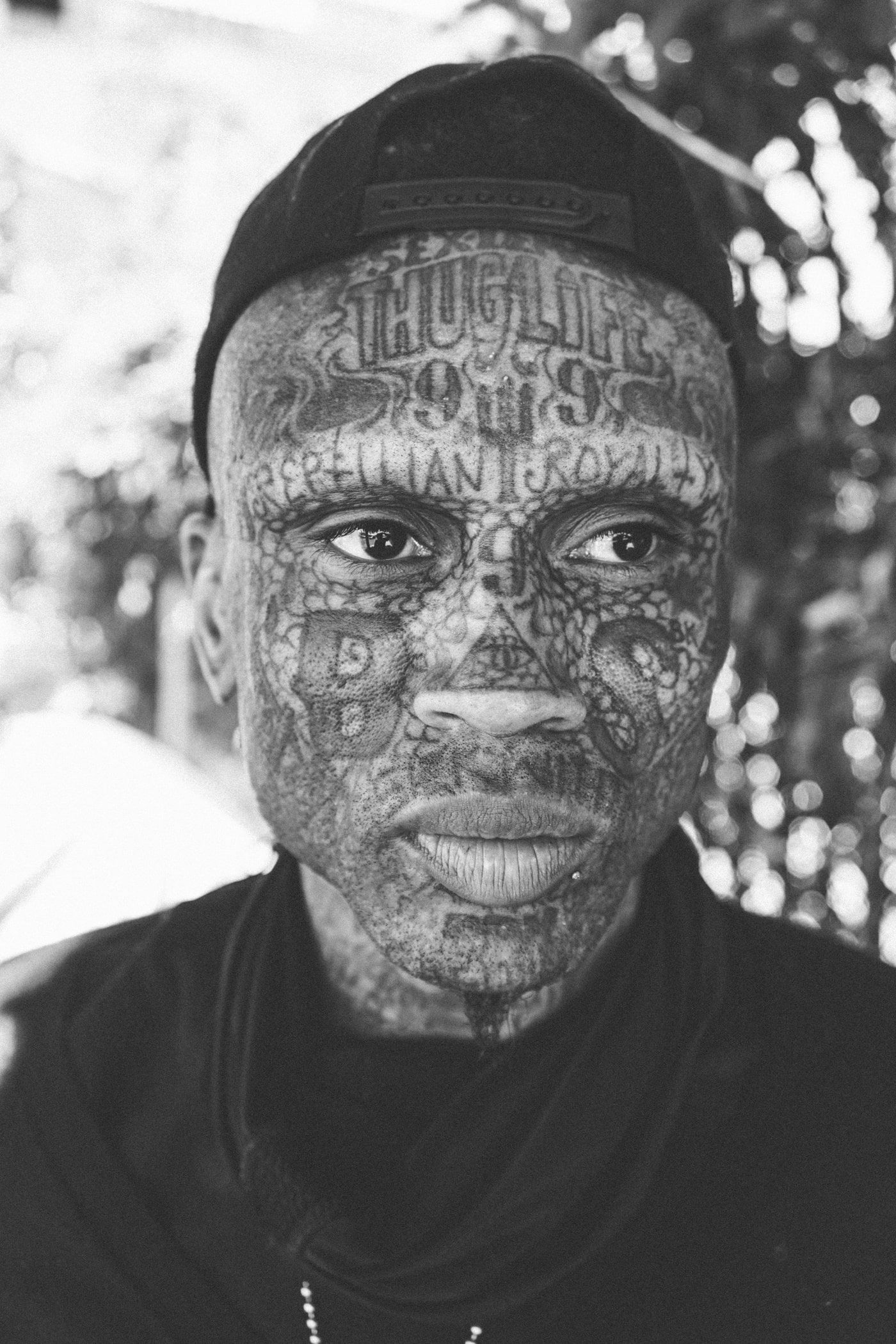
What inspired the shift in focus from the Skid Row community in “Sidewalk Champions” to the broader L.A. neighborhoods in “Grey Flowers”?
After I put out Sidewalk Champions, I lost a bit of my luster for continuing to take photos of Skid Row. I still go there often to keep up with people and film there for a documentary I’m working on, but after the book came out, I felt a kind of closure that I wasn’t expecting. Prior to that, I’d been thinking for a couple of years that, eventually, I wanted to do a book where I went all over L.A. Things just lined up for me at the beginning of 2022, and the time was right. I made the transition.
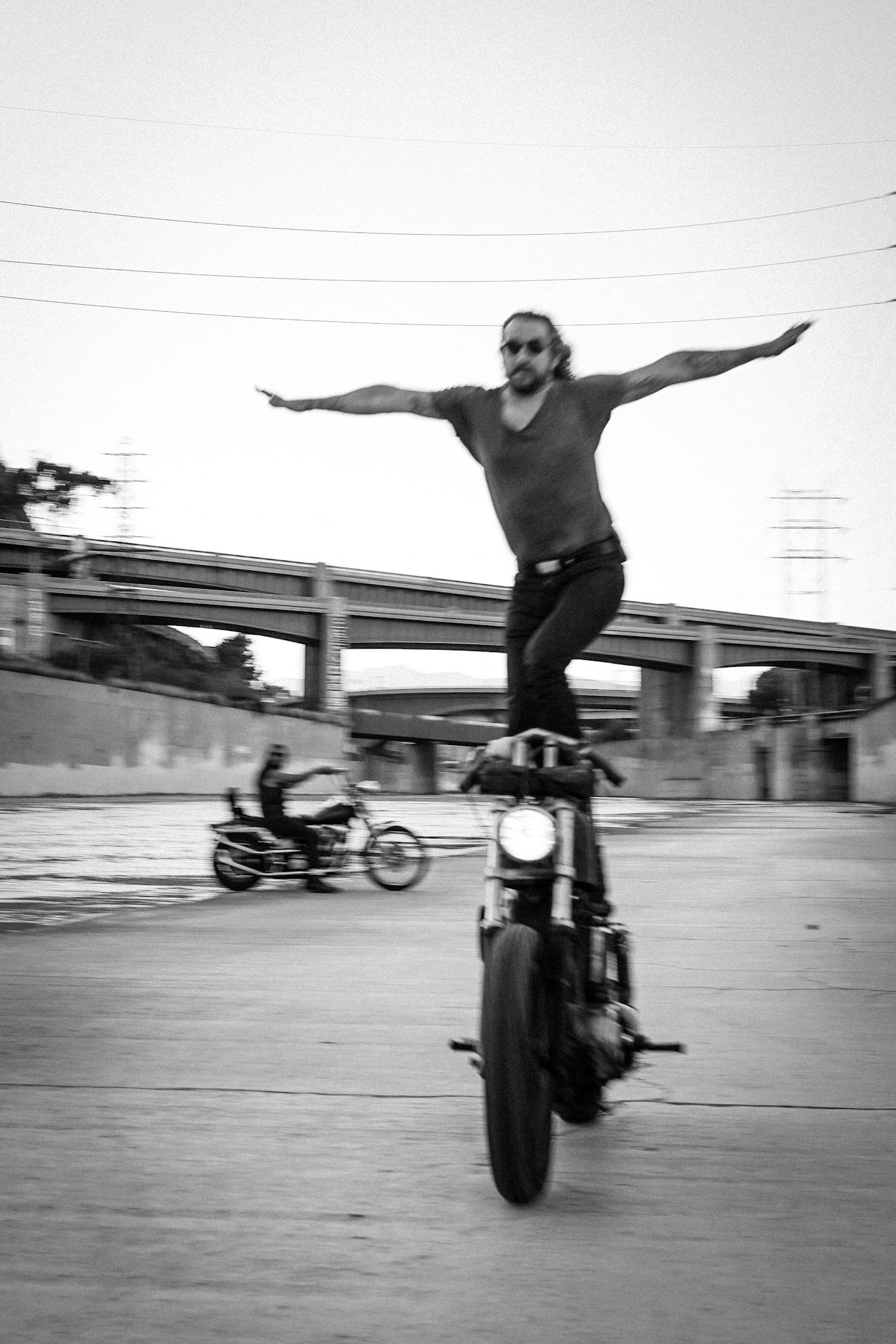
In “Grey Flowers”, you capture the raw, gritty aspects of L.A. neighborhoods. What drew you to these particular scenes and subjects?
I’ve always been drawn to people and places that tend to be more raw and gritty. For me, it’s the honesty in these subjects. I learn more from people who aren’t trying to put on a facade, and I feel a connection with them. I like working-class neighborhoods, too. There is always more of a sense of community and humanity amongst them.
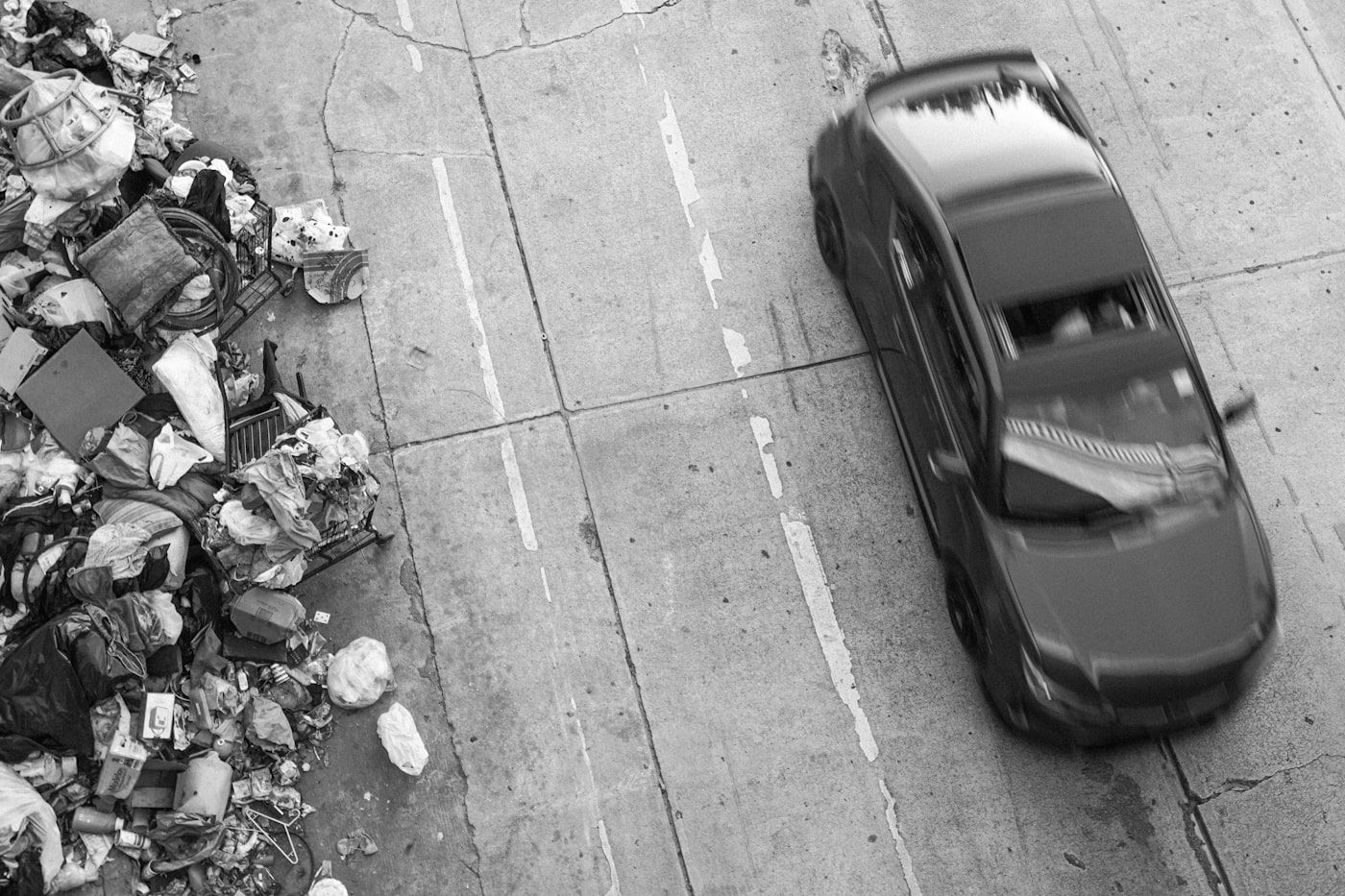
How do you find or recognize the ‘beautiful strangers’ that you photograph? What qualities make them stand out to you?
There is usually some kind of unique standout quality in either their appearance or demeanor. Some of the more obvious visuals are punks, pimps, gangsters, and sex workers. However, sometimes I start a conversation with someone who seems unapproachable because of their demeanor, but most people are open to conversation if you’re polite.
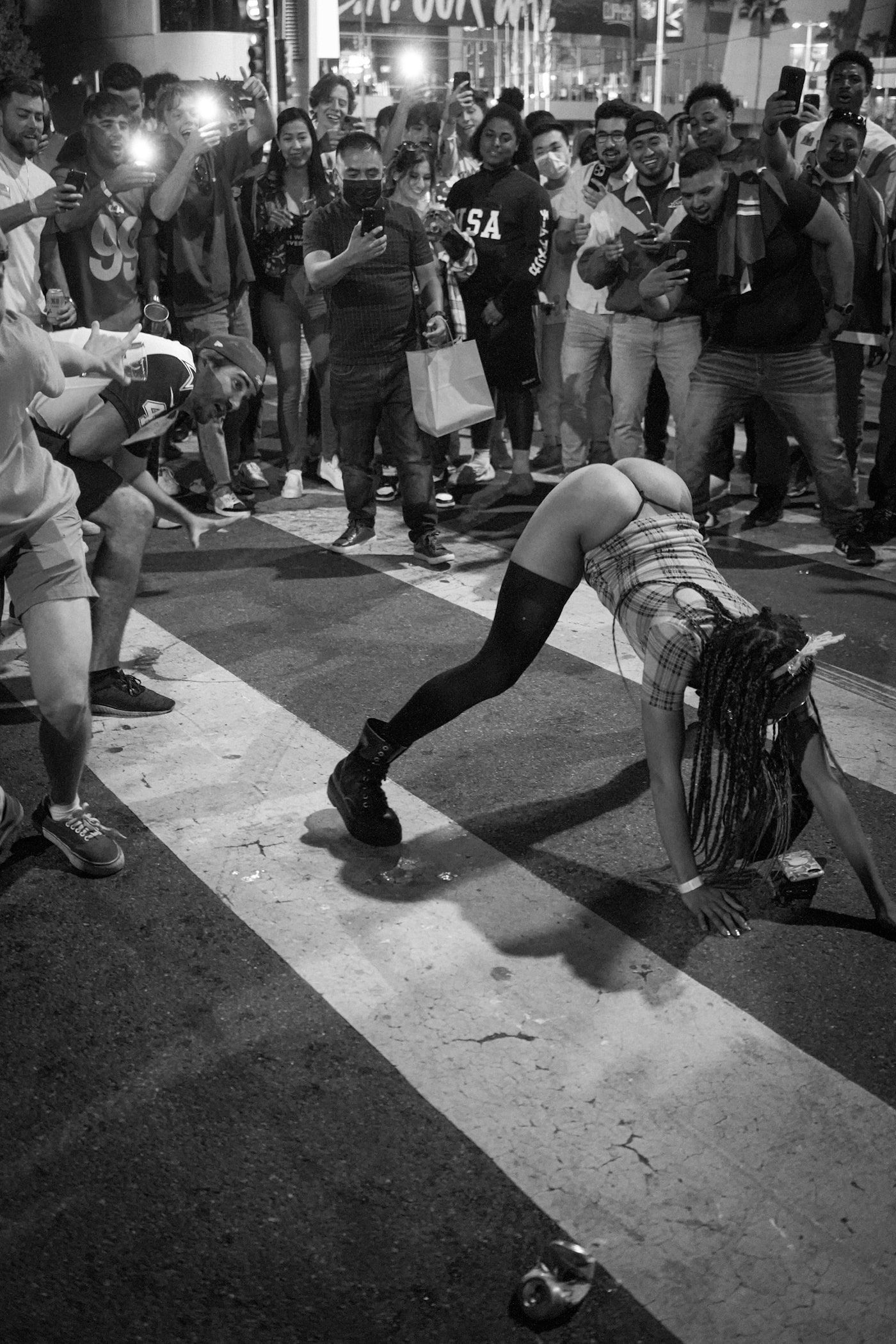
Can you describe the process of gaining trust and forming relationships within these communities, especially as an anonymous photographer?
I’m genuine in wanting to get to know people, and it’s not just for the sake of taking photos. I’m deeply curious by nature. I ask a lot of questions, and I think people just respond well to someone taking an interest in them. For some communities, I continue to travel back whenever I can. I like to keep in touch with people I meet as well.
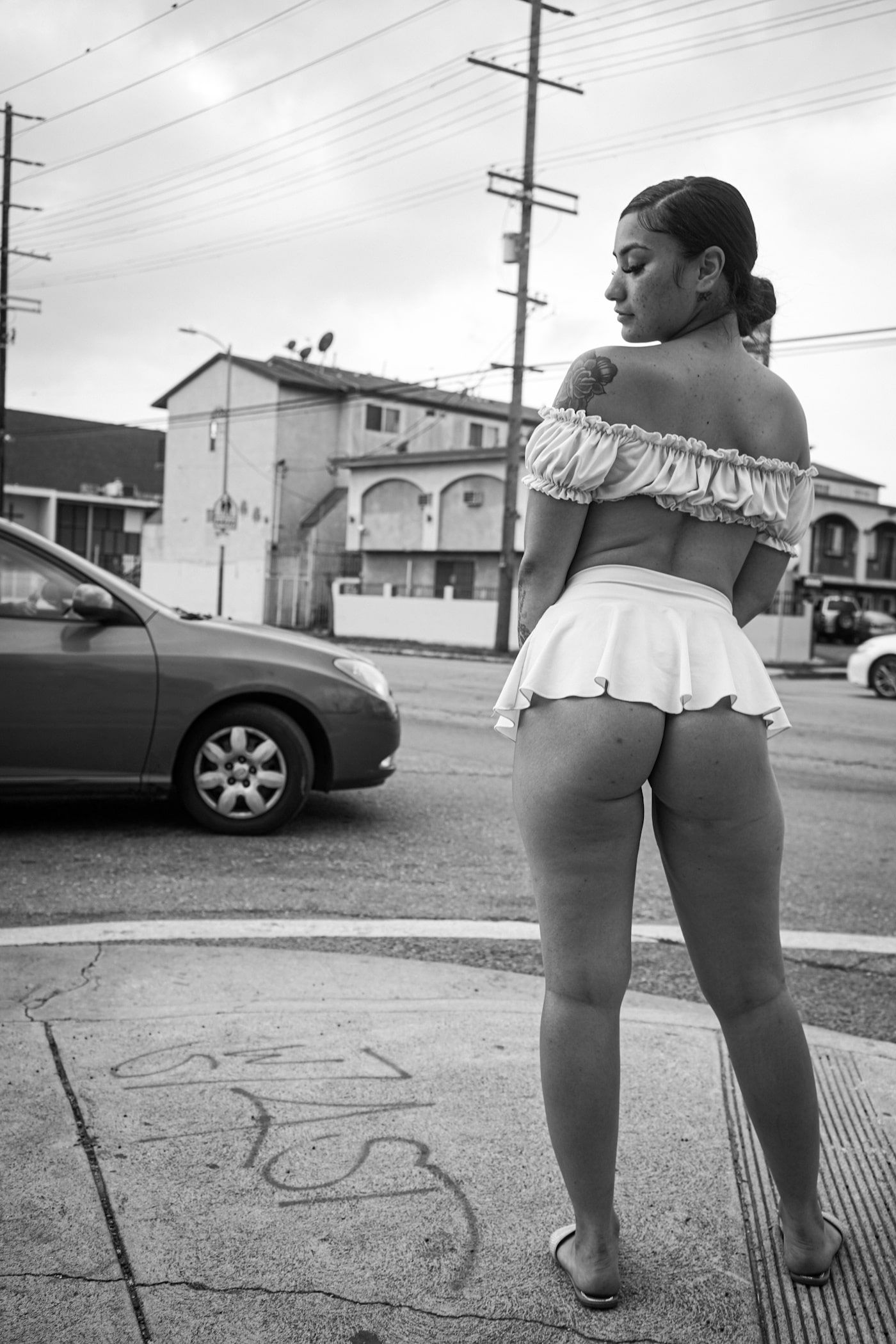
What challenges have you faced in photographing such a wide array of individuals, and how have you overcome them?- How do you decide which aspects of street life to highlight in your photography?
The only real challenge has been time and never having enough of it. I was able to take all these photos in six months because I decided to neglect everything else in my life and dedicate myself to walking around and taking photos every day. I wanted to live and breathe this book while making it. Sometimes, as an artist, we have to put our personal lives on hold and give ourselves over to a project. Usually, that’s easier for me. I have a harder time maintaining personal relationships, but I’m learning to be more balanced.
How do you maintain this authenticity while ensuring you’re respectfully representing the lives of those you photograph?
I do my best to take photos that people would be proud of. Something they could show their friends. I’m not trying to make anyone look bad or exploit them.

How do you balance your emotional responses to the scenes you capture with the need to remain an objective observer?
Compartmentalizing is a trait I’ve gotten better at over the years, but I have days where things I witness get to me. I try to remind myself I’m a documentary photographer, and I’m here to capture things as they are. In the words of Tupac, “I was given the world I didn’t make it.” In my life, if I have anything to offer in the fight to make the world a better place, it’s with my camera. It is my only weapon. I feel a sense of responsibility behind the lens.
Your work has been described as bypassing voyeurism for empathy and presence. How do you maintain this balance in your photography?
Get to know your subjects. Treat them with dignity. Take dignifying photos of them. I try to humanize folks and never demonize them. There’s enough exploitation photography out there already, and that’s just not me.
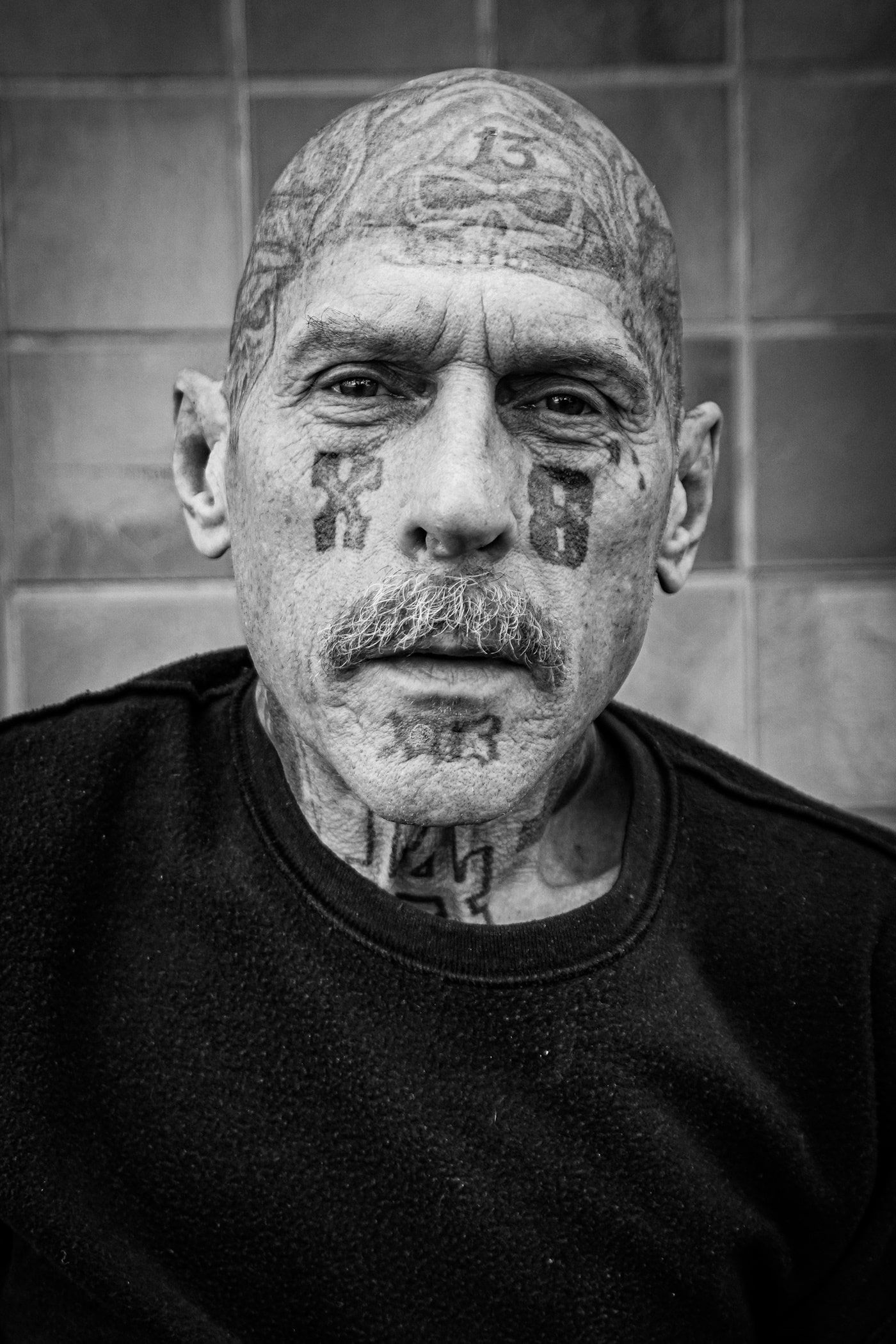
What techniques do you use to create such immersive and compelling images?
I try to capture a street portrait of someone and really show their eyes. Their eyes are most telling. They give off a lot of emotion. Or I look to capture a moment that tells a story. A woman cutting a man’s hair on the sidewalk, a girl with arms covered in scars from cutting, or someone bathing in a fire hydrant. These little moments tell big stories about the lives of the people in the photos.
What role does your background in punk culture play in your approach to street photography and in the creation of the music video trailer for “Grey Flowers”?
Punk plays a very big part in my background and who I am today. My first show was Fugazi when I was eleven or twelve, and that day forever changed my life. I grew up going to shows, collecting zines and records, and being influenced by many things surrounding that community. A lot of punks are outspoken activists, and they’re not afraid to get a little dirty. That speaks to me. The whole DIY attitude always appealed to me, too, and I feel that way about street phototherapy as opposed to studio photography. Make the best of what you’ve got.
As for the trailer, the song Check On Your Friends is from the band Nu Godd, who I have been documenting quite a bit since Grey Flowers. That song just felt like a book to me. It’s raw and gritty, yet its beauty makes me feel sad in a happy way, if that makes any sense.
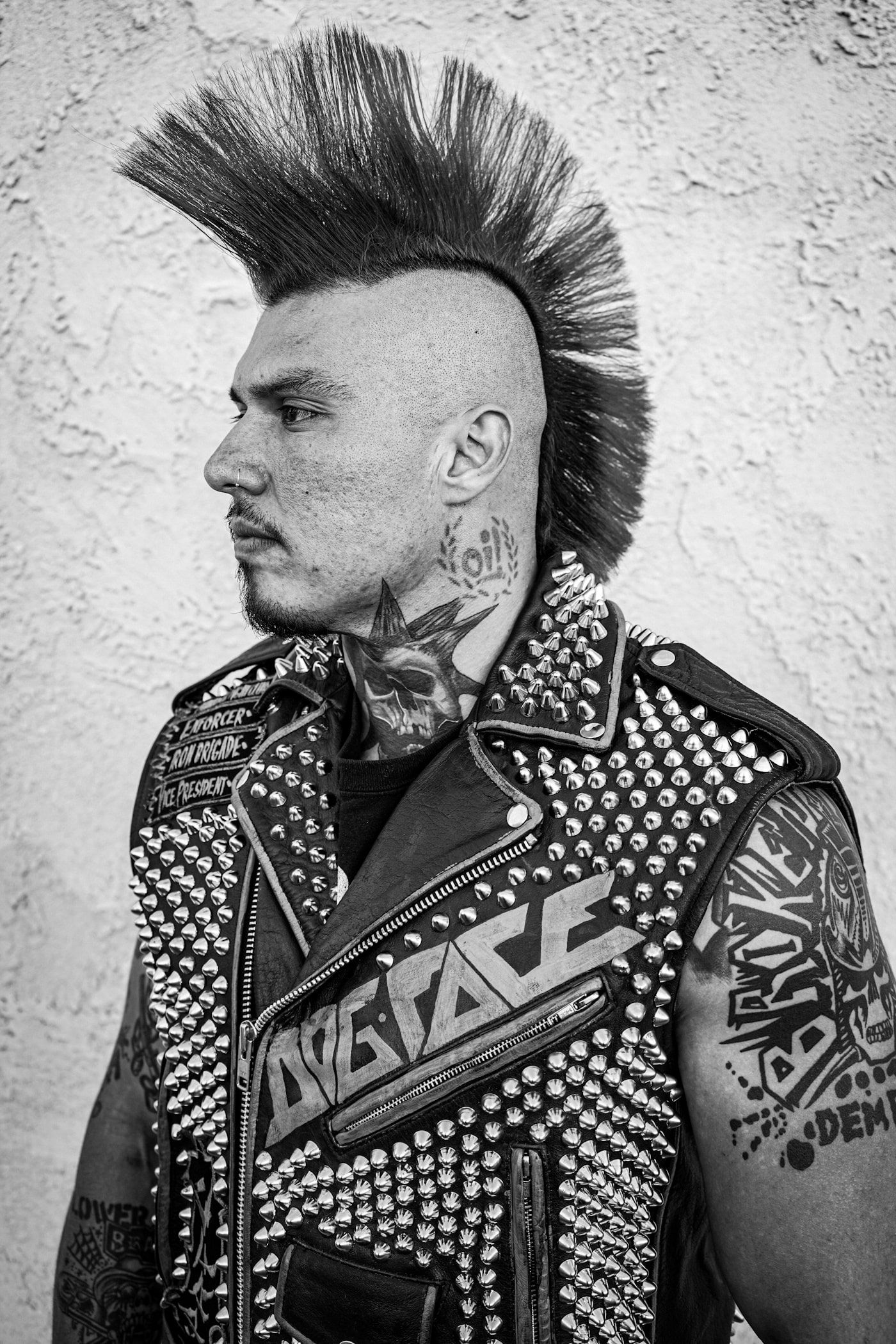
As an activist, how do you see your photography influencing or supporting your advocacy work for the unhoused?
When I shoot photos of the unhoused, I aim to photograph them like fine art photos without making them so glossy that they lose the honesty of their situations. I want the photos to catch people’s attention enough for them to stop and read their stories. As a society, we tend to overlook our unhoused neighbors and dehumanize them.
I want people to think of them as people, not as homeless. Rehumanize them. It’s much harder not to care about someone’s situation when you consider them equal.
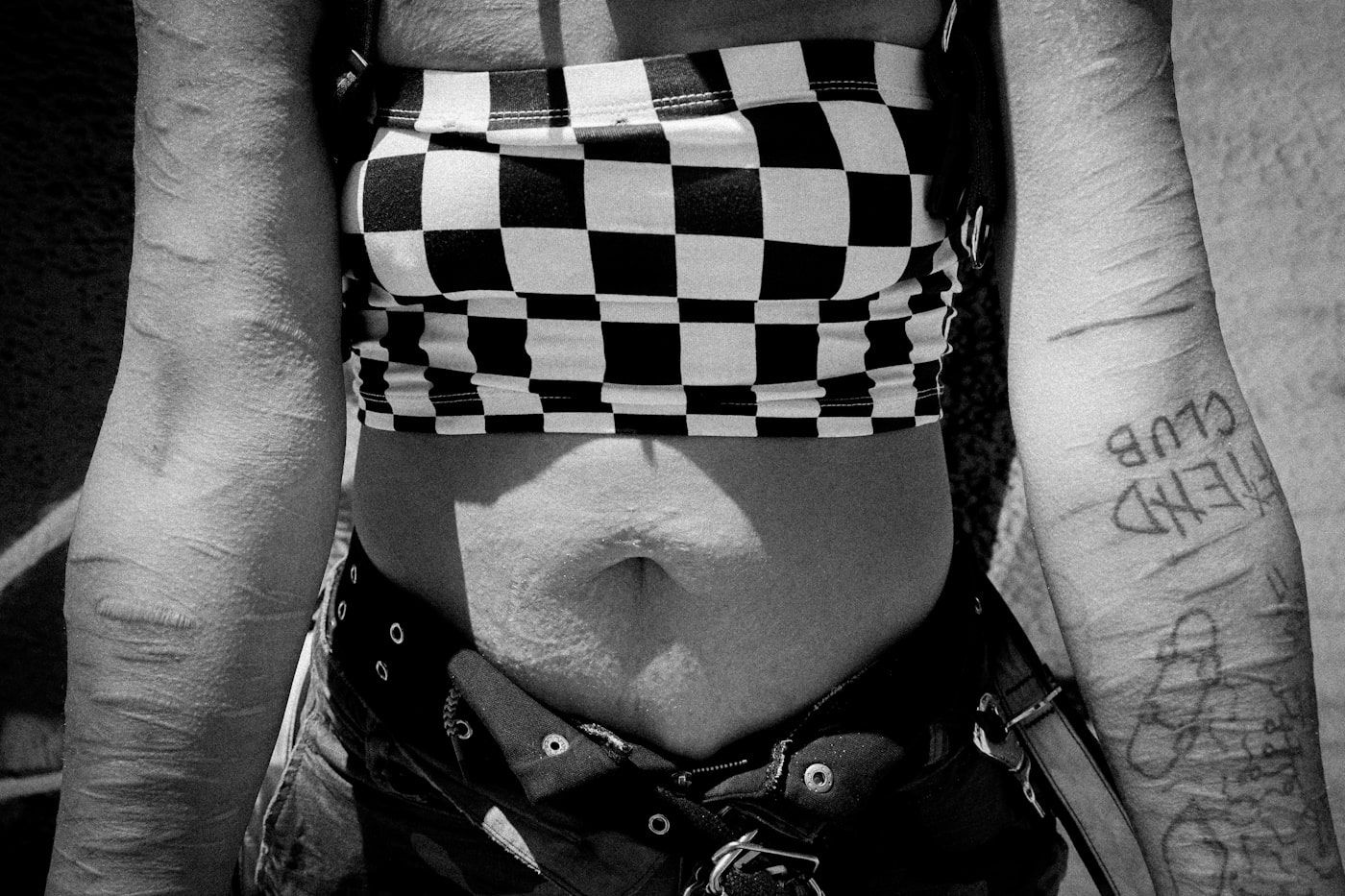
The Suitcase Joe Foundation’s mission is closely tied to your photographic work. Can you share how the proceeds from “Sidewalk Champions” have impacted the foundation’s efforts?
Sidewalk Champions itself did not make a ton of revenue, but it did catch the attention of some larger donors who have given the foundation larger sums of money. We’ve donated quite a bit to the L.A. Mission and started several programs there.
We also partnered with Safe Park L.A., a program that organizes safe overnight parking for people living in their cars. There is a security guard there at night, and we supply immediate resources like food and medicine to help people get into housing, give them gas money so they can get to work, or link them up with their own case worker who can help them specifically with certain needs. A lot is happening, but we’re still far from where we want to be.
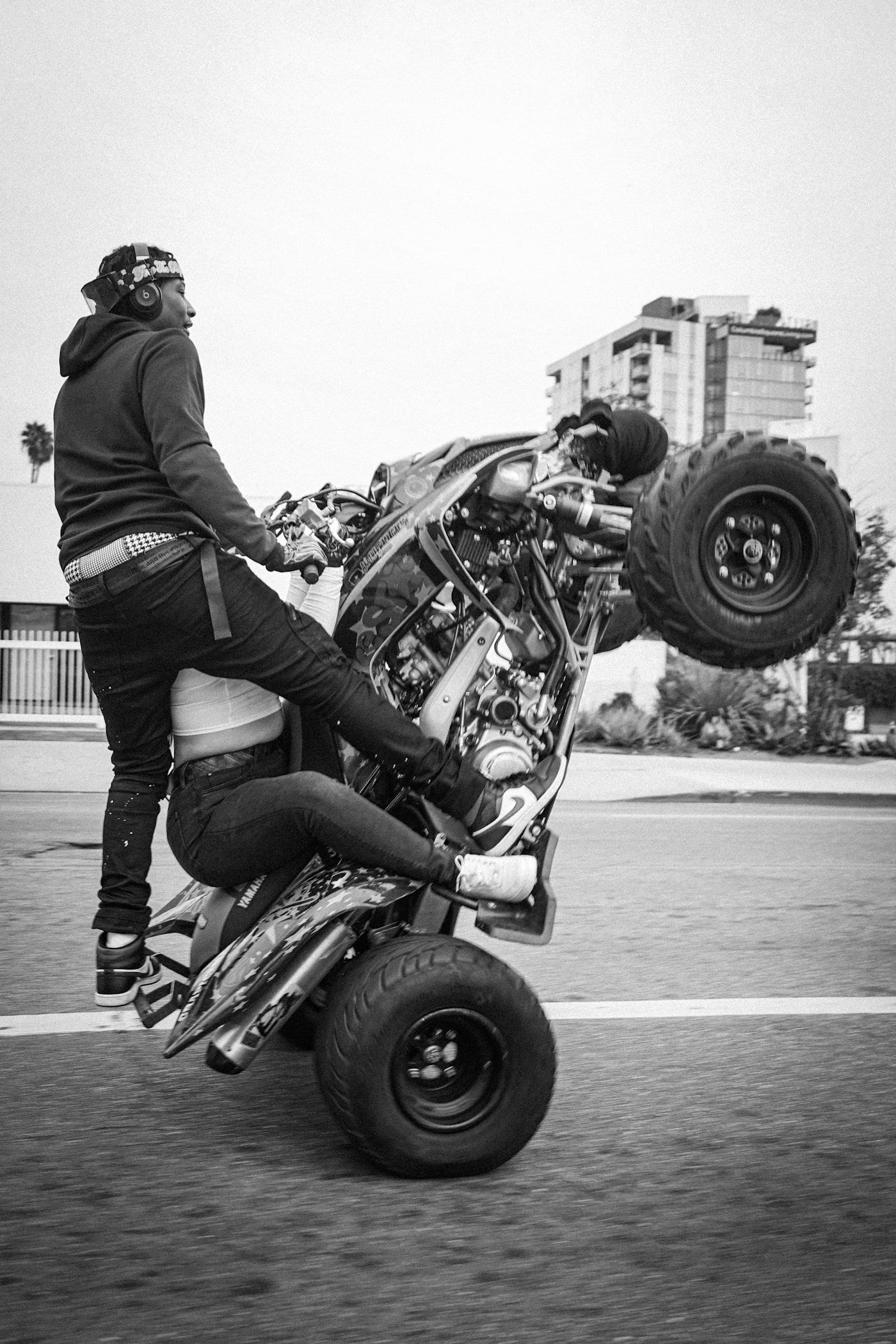
With your unique perspective on L.A.’s street life, have you noticed any significant changes or trends in these communities over the years?
I’m seeing a lot more drug use out in the open, and I’ve watched Skid Row thin out considerably in population over the last few years. Some of this is due to more people getting housing. A lot of it has to do with people dying from fentanyl.
That drug is suicide. I’m seeing way more encampments all over the city now. The faces change, but the crisis doesn’t seem to be changing significantly for the better.
Are there any other artists or photographers you discovered in 2023 who are also documenting similar aspects of city life? Who would you recommend?
I’m part of a photo group called The L.A. Six, and we each take photos of our own corners of Los Angeles. It’s myself, Estevan Oriol, Merrick Morton, Oginee Viamontes (AKA OG), and Frankie Orozco. We lost one member recently and are currently looking for a new sixth. Everyone in the group is active and doing inspiring things. I recommend taking a look at each of them.
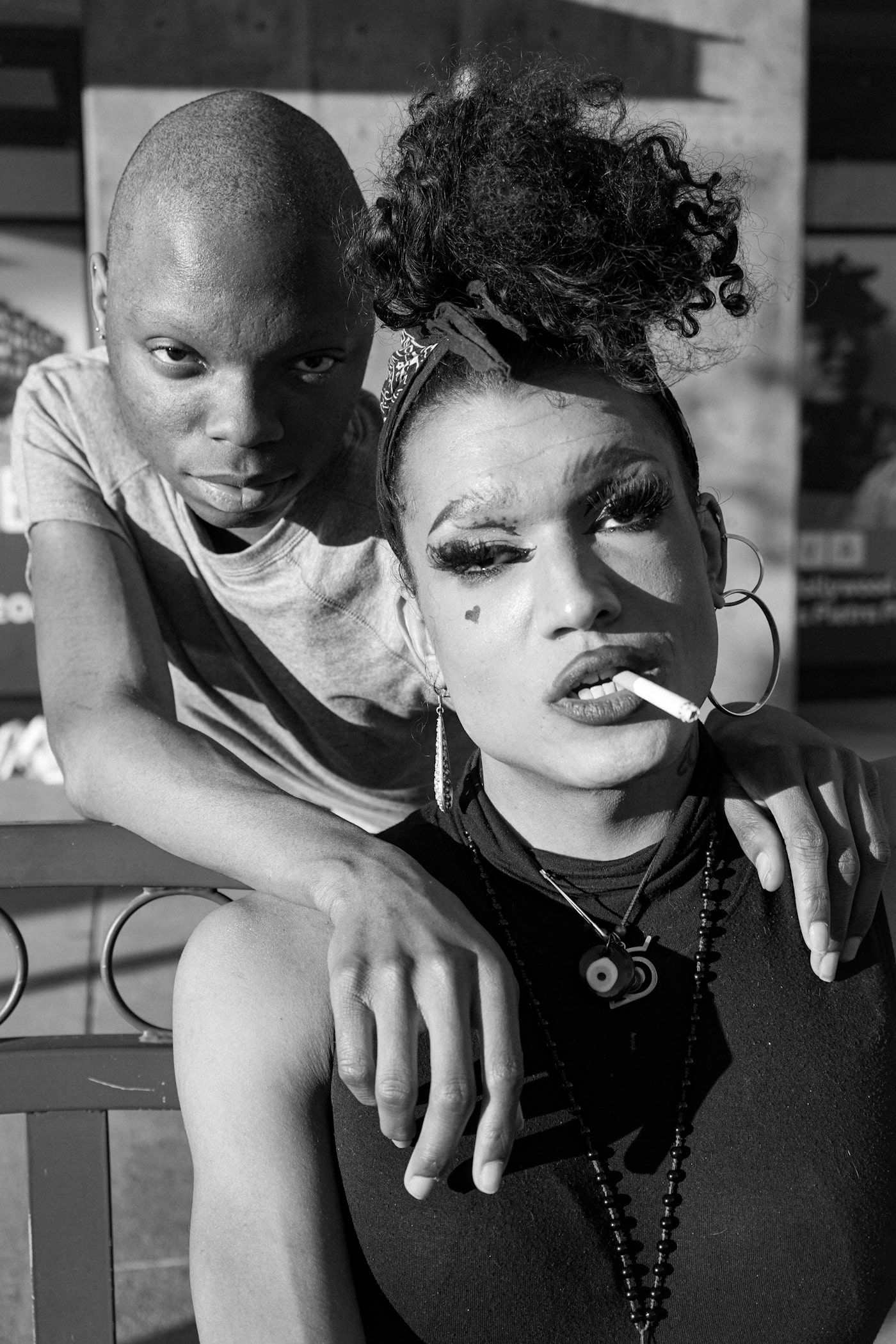
Finally, what’s next for Suitcase Joe? Are there any new projects or collaborations on the horizon that you can share with us?
I’ve been shooting a documentary for the last 5-6 years following some people around in Skid Row that I may be wrapped up shooting in the next year. After I was done compiling photos for Grey Flowers, I felt there was more to explore, and I’m currently working on a docuseries with another filmmaker.
Each episode is based on a different subculture in L.A. for season one. Besides that, I’m already halfway shooting for my next book, but It’ll be a while before I put it out. I have a lot of work to finish with the documentaries over the next year or two.

How do you hope your audience will react or engage with the stories and people depicted in “Grey Flowers”?
I never think too much about my audience when I make a project. In general, I hope to make things that inspire people to make their own work and treat people with dignity and respect. Too much war in this world. We’re all gonna die. Let’s try to make this experience as pleasant as possible for all of us.



